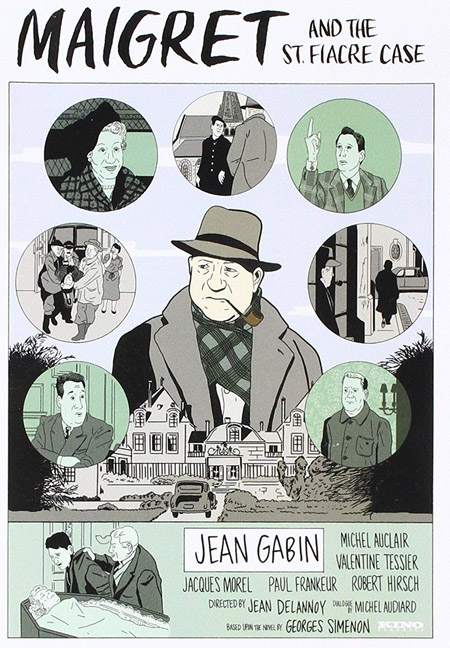
“SIMENON AND GABINâ€
By Raymond Benson
The
Belgian author, Georges Simenon, wrote close to 500 novels and an abundance of
short stories in his lifetime, and these included 76 novels and 28 short tales
featuring the French police detective, Commissioner Jules Maigret, published
between 1931 and 1972. That’s an impressive achievement in and of itself, but
more importantly, Maigret became a worldwide beloved fictional character in the
mystery genre. Oddly, Maigret is not as well-known to the general public in the
United States as he is in Europe and the U.K. Thankfully, Penguin Books in
America is in the process of reissuing the series in English.
There
have been numerous film and television adaptations of Simenon’s works. Jean
Renoir did the first feature film adaptation in 1932 (Night at the Crossroads). British television has produced three
different series, with three different actors (Richard Harris, Michael Gambon,
and Rowan Atkinson). France made an overwhelming number of TV episodes with a
couple of actors.
In
1958 and 1959, two very good Maigret pictures were made in France, elevated to
a high status by the presence of actor Jean Gabin in the role. Gabin is without
question a key figure in French cinema. In many ways he could be called the
“French Spencer Tracy.†Well-regarded for such classics as Pépé le Moko and Grand Illusion
in the 1930s, Gabin enjoyed a long career into the 1970s. He was thus the right
age to play Commissioner Maigret in the late 50s, and he is easily one of the
best of the several actors who have interpreted the role.
Maigret is a no-nonsense investigator
who is smart, gruff, and is never without a pipe. Some might compare him to
Hercule Poirot, but Maigret is decidedly less eccentric of a character. He also
appears in darker, noirÂ-ish tales
that are closer to psychological crime dramas than Christie’s detective ever
did. Maigret Sets a Trap and Maigret and the St. Fiacre Case, the
first two of three Maigret pictures that Gabin made, are indeed surprisingly
dark and deal with some seriously sick criminals.
For example, in Sets a Trap, the perp is a Jack the Ripper type who gets off on
stabbing young women in the street at night—and the filmmakers don’t pull any
punches in frankness. Much of the setting is in sleazy Parisian back alleys. while
gathering clues and focusing his suspicions on various men—and women—Maigret carefully
constructs an elaborate and ingenious net with which to snare his prey.

The St. Fiacre Case takes
place in the country, near Moulins, Maigret’s childhood home. A countess with
whom the inspector was close back in the day has been threatened—and then
mysteriously dies. Maigret quickly determines it was murder, and he sets about
again laying the foundation for a gathering of suspects at the end of the movie
to reveal the culprit.
Director Jean Dellanoy fashions two
stylish whodunnits that maintain the viewer’s interest and keep us guessing.
While there are moments of humor here and there, these pictures take the
Maigret character seriously and faithfully and satisfactorily execute Simenon’s
work.
Kino Lorber’s new restorations of the
two films (separate releases) are marvelous. The images are crystal clear and
without blemishes, and they are some of the best transfers of 1950s material
I’ve seen. The soundtracks are in 2.0 mono and are in French with optional
English subtitles. There are no supplements other than the theatrical trailers.
Fans of Simenon and Maigret, or of Jean
Gabin, or of whodunnits in general, will want to pick up these two releases.
CLICK HERE TO ORDER "MAIGRET SETS A TRAP" FROM AMAZON
CLICK HERE TO ORDER "MAIGRET AND THE ST. FIACRE CASE" FROM AMAZON